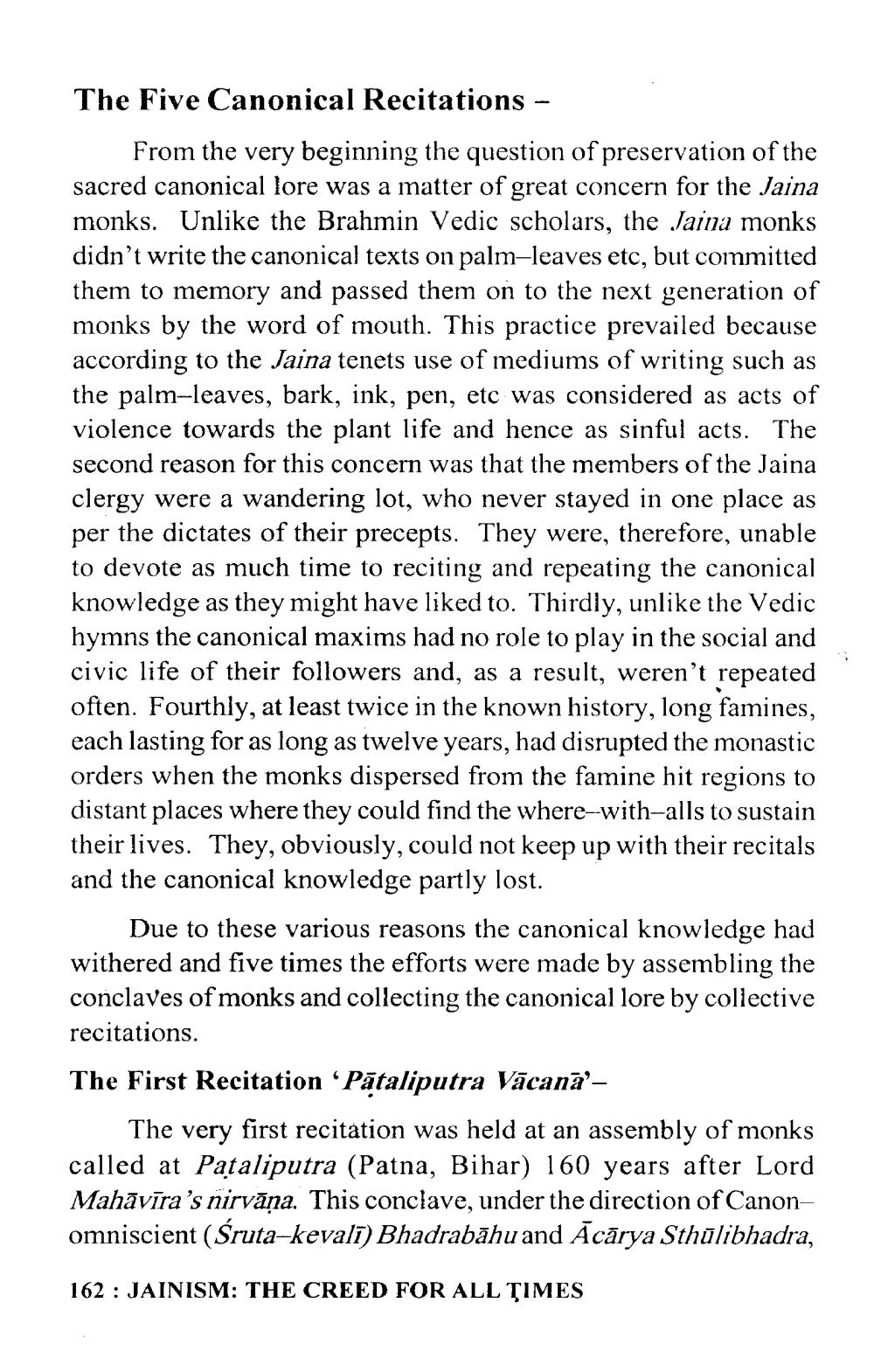________________
The Five Canonical Recitations -
From the very beginning the question of preservation of the sacred canonical lore was a matter of great concern for the Jaina monks. Unlike the Brahmin Vedic scholars, the Jaina monks didn't write the canonical texts on palm-leaves etc, but committed them to memory and passed them on to the next generation of monks by the word of mouth. This practice prevailed because according to the Jaina tenets use of mediums of writing such as the palm-leaves, bark, ink, pen, etc was considered as acts of violence towards the plant life and hence as sinful acts. The second reason for this concern was that the members of the Jaina clergy were a wandering lot, who never stayed in one place as per the dictates of their precepts. They were, therefore, unable to devote as much time to reciting and repeating the canonical knowledge as they might have liked to. Thirdly, unlike the Vedic hymns the canonical maxims had no role to play in the social and civic life of their followers and, as a result, weren't repeated often. Fourthly, at least twice in the known history, long famines, each lasting for as long as twelve years, had disrupted the monastic orders when the monks dispersed from the famine hit regions to distant places where they could find the where--with-alls to sustain their lives. They, obviously, could not keep up with their recitals and the canonical knowledge partly lost.
Due to these various reasons the canonical knowledge had withered and five times the efforts were made by assembling the conclaves of monks and collecting the canonical lore by collective recitations. The First Recitation ‘Pataliputra Vācanā'
The very first recitation was held at an assembly of monks called at Pataliputra (Patna, Bihar) 160 years after Lord Mahāvīra's nirvāṇa. This conclave, under the direction of Canonomniscient (Sruta-kevalī) Bhadrabāhu and Acārya Sthūlibhadra,
162 : JAINISM: THE CREED FOR ALL TIMES




